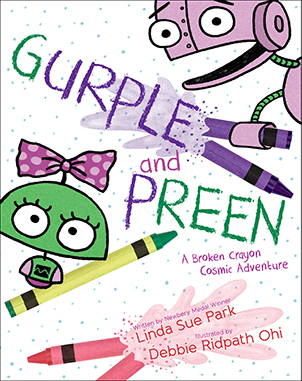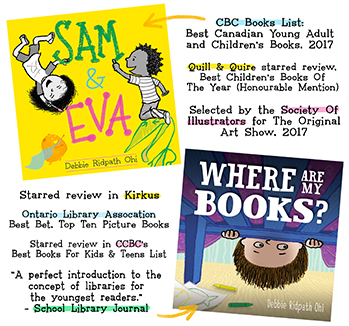 Visiting Gaming Edus, a Minecraft server for educators and students; thanks to children's book author & educator Liam O'Donnell for the invite. Everyone's been super-helpful, and one of the students even built me a small stone home complete with helpful signs! You can find out more about GamingEdus here: http://www.gamingedus.org
Visiting Gaming Edus, a Minecraft server for educators and students; thanks to children's book author & educator Liam O'Donnell for the invite. Everyone's been super-helpful, and one of the students even built me a small stone home complete with helpful signs! You can find out more about GamingEdus here: http://www.gamingedus.org
When I was visiting with my nephews on Christmas Day, they introduced me to Minecraft. I had been aware of the game before, of course, but wasn't that impressed with the blocky graphics. Plus I had assumed it was mainly a hunt-and-shoot type of game, which didn't appeal to me that much.
But my mom-in-law had given my sis-in-law a copy of The Minecraft Guide For Parents, and while idly flipping through some of the pages, I realized that maybe there was more to the game than I had previously thought. Since then, I've also discovered that more schools are starting to bring Minecraft into the classroom (see my list of resources at the end of this post).

So far, I'm finding Minecraft more appealing than Second Life. Although the graphics are chunky, the benefit is that everything's super-fast, with no complex rendering needed. The blocky graphics have a charm of their own, and building things with them remind me of the childhood fun I used to have with Lego. (Side note: I have no idea if Lego tried to buy Minecraft but if they didn't, they should have.)
In addition to giving me another way of connecting with my nephews, it's also (depending on the server) a much more family-friendly environment than Second Life. I've already run into some parents who play Minecraft online WITH their kids.
Over the holidays, I was also invited to check out the GamingEdus Minecraft server by children's book author and educator Liam O'Donnell. With support of the EDGE Lab at Ryerson University, the GamingEdus project was founded as a way to introduce other educators to the learning potential of videogames, through the Minecraft, with a focus on equity, diversity, inclusion and student-led, inquiry-based learning.
To parents and educators who are skeptical about the potential benefits of Minecraft: I strongly encourage you to check out Liam's posts about how he uses Minecraft in the classroom, especially for students who need reading and writing support.
But back to making books...
There are many different aspects of Minecraft, including player-vs-player interactions, but the part that appeals to me the most is crafting: seeking out resources and putting them together to create other items. You can grow and harvest plants, hunt, mine for minerals, raise sheep for wool, create dyes to color that wool as well as glass. You can even create paintings, though currently any created painting becomes one of 26 canvases by artist Kristoffer Zetterstrand. Hopefully someday the Minecraft people will will let us create our own.

But look above! I recently discovered that not only can players create books, but they can write in these books and then give them to others. (An aside: you can't take items with you from one world into another, so you'd need to create the book in the same world in which you plan to use it.)
Before reading further, you should also be warned that the only way to create books in Minecraft is to kill some virtual creatures. And if you're an author reading this just to figure out a way of promoting your book to the Minecraft crowd, you may as well skip the rest of this post.
[Edit January 13, 2014: Liam O'Donnell has pointed out that you can skip the crafting part and go straight into the writing part if you play in Creative Mode.]
For those of you who have kids who play Minecraft or who enjoy playing Minecraft yourself, keep reading...
I'm still in the midst of creating my own writeable book in Minecraft. Why am I doing it? Because I love Minecraft AND I love books, and cannot resist the challenge. In theory, a written book created in Minecraft can contain up to 50 pages, with up to 256 characters per page. You can paste text but currently can't edit/select text. You can read the tech overview on the Minecraft Gamepedia, but here's a basic overview:
You can get feathers by killing chickens:

You get ink sacs by killing Squid:

But you also need a Book, which is created with Paper and Leather:

You can get leather from killing cows or horses (I KNOW I KNOW! I did warn you), and paper from sugar cane:

You can also use paper for making maps as well. Anyway, here's my sugar cane crop:

The wooden blocks cover an underground irrigation system I set up, since sugar cane will only grow beside water.
SUMMARY:
Yes, it's a long and involved process to create a book in Minecraft. But for me, at least, it's part of the gameplay and I'm enjoying it thoroughly. I'm also hugely curious about redstone dust, which can be used to create power circuits and operate mechanism components. One of my nephews tells me that it's possible to make a simple computer in Minecraft. Lots of potential for creative fun in the future and whoa, so many potential creative learning experiences for young people.
Related Resources:
Messy Learning With Minecraft - by children's book author and educator, Liam O'Donnell
GamingEdus - Includes Minecraft Resources For Educators and Five Ways Minecraft Can Boost Student Writing Skills
MinecraftEdu
Minecraft.net - Official site
Book: The Minecraft Guide For Parents by Cori Dusmann (PeachPit Press, Dec/2013). The Indiebound entry doesn't seem to have much info, unfortunately, but there's more on the Amazon.com book page. I bought the Kindle version. Includes basics of how to install, set up and play the game.













 Saturday, December 19, 2015 at 7:50 AM
Saturday, December 19, 2015 at 7:50 AM





